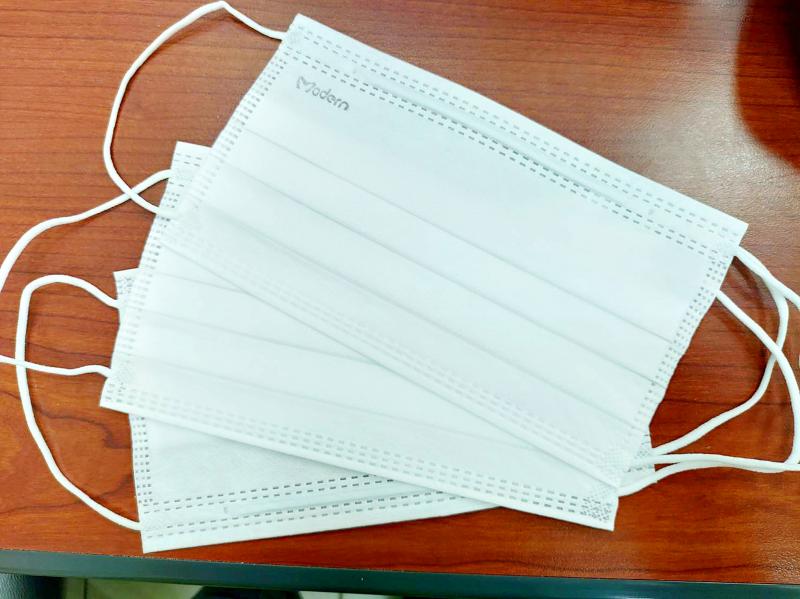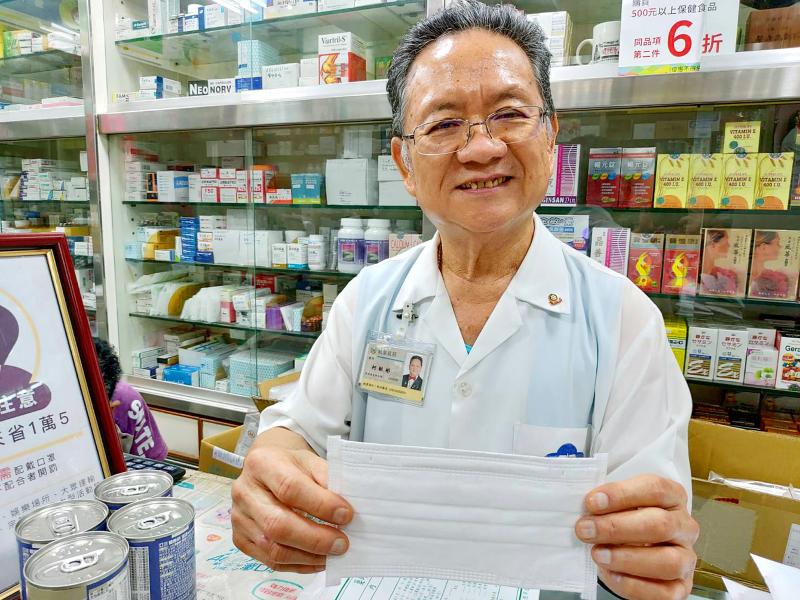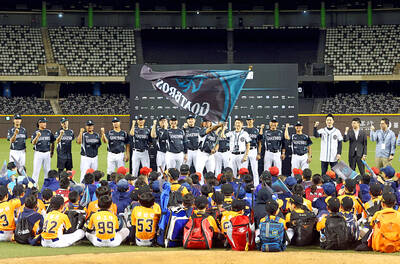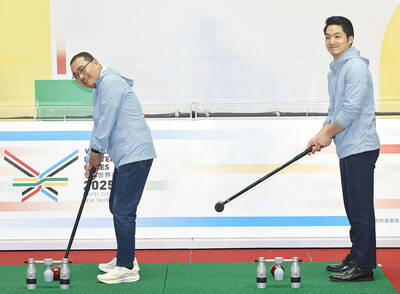Pharmacist Ko Yu-pin, father of novelist Giddens Ko, says that even though white masks are the most popular type in Japan, they are not at all popular with the Taiwanese. Ko says that some customers asking for masks decline the minute they hear the masks are white. When he asks them why they do not want to buy white masks, they say that they have no idea which side is supposed to face out, so they would rather not use white masks at all.
Consequently, Ko decided to set up a “mask class.” Whenever anybody comes to buy masks, no matter whether the current batch is white or not, he always gives them a quick lesson, using a sample white mask to explain how to distinguish the inner and outer sides.
Ko says that the easiest way to tell the difference between the inner and outer sides of a white mask is that the side with the pleats facing downward is the outer side. There are two reasons for this. The first is that having downward-facing pleats on the outside makes it easy to breathe, and people who wear glasses will not get their glasses misted up when they exhale. The other reason is that dust will not accumulate in downward-facing pleats.

Photo: Liu Hsiao-hsin, Liberty Times 照片:自由時報記者劉曉欣
Ko says that some people think they can distinguish the inner and outer sides of a white mask by the ear straps, but actually some mask factories put the straps on the inside and some put them on the outside, so the straps won’t tell you anything. The best way is still to look at the pleats. Just remember that the side with the downward-facing pleats is the outer side and you will get it right.
Ko says that every time he receives a batch of plain white masks, he and his wife set an example by putting on white ones. Ko says that previously only people who wanted to send masks to Japan would specifically ask for white ones, but since he started his mask class, most people have been accepting white masks. After all, no matter what style or color of clothes you are wearing, you can’t go wrong with neutral white masks, which go well with anything.
(Translated by Julian Clegg, Taipei Times)

Photo: Liu Hsiao-hsin, Liberty Times 照片:自由時報記者劉曉欣
作家九把刀的藥師爸爸柯毓彬說,日本人最愛的白色口罩,偏偏台灣人接受度不高,有的民眾一踏進藥局要買口罩,一聽到是白口罩,馬上就說「不用了」,他都會反問對方為何不買白口罩,才知道原來是因為買了白口罩,要戴的時候卻不會分內外,所以,乾脆就把白口罩列為拒絕往來戶。
因此,柯毓彬決定開設「口罩小學堂」,只要來買口罩的人,不論這批是否為白口罩,統統都幫民眾上課,直接就以白口罩為例,說明如何來分辨內外。
柯毓彬強調,要分辨白色口罩的內外,最容易分辨的方法,就是「摺痕朝下」的就是朝外,原因有兩個,也就是摺痕向下朝外的話,這樣呼吸順暢,眼鏡族才不會因為呼氣、吸氣就會眼鏡模糊;同時因為摺痕向下,落塵才不會累積在摺痕裡。
柯毓彬指出,有的民眾用白口罩的耳帶來分辨內外,但其實有的口罩工廠是把耳帶作在裡面,有的就作在外面,所以無法用耳帶判斷內外。最好的方法還是看摺痕,只要記得「摺痕向下」就是朝外,這樣就對了。
柯毓彬說,每當收到純白色的口罩,他跟老婆都會以身作則戴起白口罩。柯毓彬說,以前都是專程要寄口罩到日本的民眾才會特別指定購買白色口罩,但經過他的「口罩小學堂」之後,大多數人都會接受白色口罩,因為不管穿著各款各色的服裝,「百搭」的中性白色口罩都是最好的選擇!
(自由時報)

A: The 2025 World Masters Games will begin on May 17 and run until May 30. B: World Masters Games? A: It’s a quadrennial multi-sport event for people over 30, which will be jointly held by Taipei and New Taipei City. B: Cool, maybe we can go cheer for all the athletes from home and abroad. A: There will be an athletes’ parade in downtown Taipei prior to the opening ceremony on Saturday. Let’s go then. A: 2025雙北世界壯年運動會5月17日開幕,持續至5月30日閉幕。 B: 世壯運? A: 這是四年一度、以30歲以上青壯年為主的運動會,本屆是由台北市和新北市共同舉辦。 B: 好酷喔,我們去幫來自國內外的選手們加油吧! A: 週六在台北市區會有選手遊行,之後是開幕典禮,我們去看吧。 (By Eddy Chang, Taipei Times/台北時報張迪)

A: Where will the 35 sports of the 2025 World Masters Games be held? B: Apart from Taipei and New Taipei City, some games will take place in Yilan County, Taoyuan County, and Hsinchu County and City. A: The news says about 25,000 people, including many celebrities and sports stars, have already registered for the games. B: Even Taipei Mayor Chiang Wan-an, who is 47, registered for softball and squash. New Taipei Mayor Hou You-yi, who is 68, also registered for table tennis. A: And it will be the largest sports event ever in Taiwan’s history. How exciting. A:

Computex, Asia’s biggest electronics conference, kicked off Monday in Taipei, and as in years past drew industry chieftains from Nvidia Corp.’s Jensen Huang and Qualcomm Inc.’s Cristiano Amon to Young Liu of Foxconn, which makes the bulk of the world’s iPhones and Nvidia servers. But while last year’s event was a celebration of the post-ChatGPT AI boom, executives this time are likely grappling with the uncertainty of the Trump administration’s effort to reshape the global trade order — disrupting a decades-old model for tech manufacturing. This year’s exhibition will of course feature the hardware required to bring artificial intelligence to life.

Dog owners often wish they could understand their pets’ thoughts. “Dog buttons” might turn their dream into a reality. These specially designed buttons, __1__ sound chips, enable dogs to communicate their needs by pressing buttons corresponding to pre-recorded words like “walk,” “play,” “outside,” and “food.” This bridges the communication __2__ between humans and their canine companions. The science behind dog buttons is based on the concept of associative learning. It’s a process __3__ learners can link actions with outcomes. For instance, if an owner consistently presses the “walk” button and then takes their dog for a walk, the dog